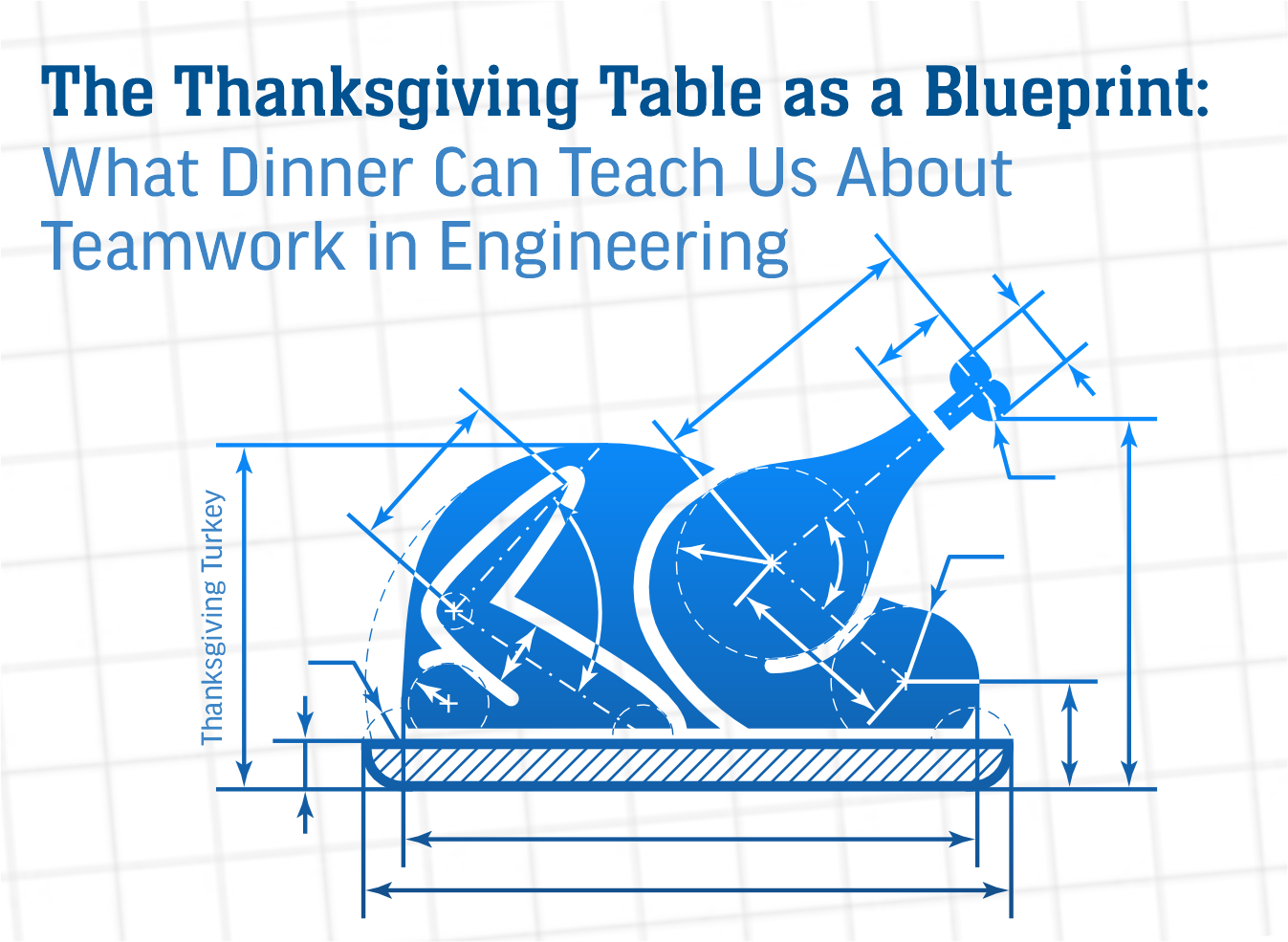Thanksgiving dinner is often the ultimate exercise in coordination: multiple dishes, tight timing, surprises (dietary restrictions, last-minute guests), and a shared goal — delivering a warm, satisfying feast all at once. In many ways, it mirrors the behind-the-scenes complexity of engineering projects. When done well, both feel seamless to the people who “just enjoy the meal.” Here are three lessons from the Thanksgiving table that map tightly to engineering teamwork.
1. Plan Backwards, Meet the “Serve Time” Deadline
A Thanksgiving host doesn’t start by roasting the turkey first. You set a target, which could be something as straightforward as “dinner at 4 pm” and then schedule backwards: bake pies at 3, mash potatoes at 3:30, start roasting earlier, thaw the turkey days ahead, etc. You also build in buffers for delays or surprises (oven overuse, guest requests, etc.).
In engineering, that same reverse scheduling is critical. We define the final delivery date first, then establish intermediate milestones, dependencies, and slack for unplanned changes. Production and operations analysts often draw the parallel: “organizing this feast has more in common with a modern production line” — with bottlenecks (often around the oven) and last-minute changes demanding flexibility. (source)
One kitchen planner even showed how to use a Gantt chart to coordinate cooking tasks, ensuring resources (oven, burners, personnel) are allocated without conflict. (source)
Lesson for engineering: start from the finish, map dependencies, and slot in buffer time. Don’t let interlocking tasks — e.g. piping, electrical, HVAC — all demand the same resources at once.
2. Roles, Handoffs & Clear Interfaces
In the kitchen, you naturally assign roles: one person handles the turkey, another does sides, someone else monitors the gravy, etc. But tasks don’t act in isolation. Many have handoffs: a dish may need cooling before carving, or plating before serving. A mis-timed handoff (e.g. someone trying to plate before a dish is ready) causes delays or chaos.
In lean construction, this idea is known as the “handoff / predecessor” concept. In planning a “Lean Thanksgiving,” Keyan Zandy describes that each task must list its predecessors (what must happen before it) to avoid bottlenecks, writing that “when we identify our handoffs and constraints ahead of time, we create flow and eliminate surprises.” (source)
Similarly in engineering, clear boundaries matter. For example, the structural team must finish before the finishing trades start; the mechanical rough-in must be done before insulation closes up. If teams don’t communicate handoff timing, “waiting” becomes wasted time.
Lesson for engineering: define interfaces, predecessor/successor relationships, and make explicit who is responsible at each stage. Enforce clarity at handoffs so nobody is blocked without knowing why.
3. Adaptive Coordination & Real-Time Communication
Thanksgiving rarely goes exactly to plan: an oven might overheat, a guest swaps dishes, or a last-minute dietary constraint arises. The kitchen team must communicate in real time. “I need more time,” “switch ovens,” “delay plating.” A rigid plan without agility will fail under those conditions.
On the factory or project floor, the same holds true. One “perfect plan” rarely survives contact with reality. In the article Creating the Perfect Thanksgiving Meal, the author notes that in both kitchen and manufacturing contexts, seamless teamwork depends on a connected “workforce” that can adapt under pressure, writing that “the secret ingredient isn’t just good planning—it’s communication and coordination among everyone involved.” (source)
In engineering teams, that means frequent check-ins (daily standups), change protocols (how to raise and absorb change requests), and fallback options (alternate sequences if a resource is delayed). As Kelly Johnson, legendary aerospace engineer, put it in his Skunk Works philosophy: “Be quick, be quiet, and be on time.” (source)
Lesson for engineering: build channels for quick updates and adjustments, empower teams to suggest alternate paths, and maintain contingency logic so you can pivot when needed.
Bonus: The Elegance of Simplicity
One more connection worth calling out — the principle that simpler systems are more robust. In the designer/engineering world, “good design is obvious; great design is transparent.” (source)
On Thanksgiving, the best menus often minimize overcomplexity: fewer dishes, choosing items that share ingredients or oven time, reducing last-minute stress. When engineering projects avoid unnecessary features, over-specialized components, or redundant complexity, they become more maintainable, more dependable, and easier to coordinate.
Final Thought
The Thanksgiving dinner you stroll into probably feels effortless. But behind every perfectly timed dish is hours of planning, coordination, interface design, and on-the-fly adaptation. That’s no different than a successful engineering build. You aim to mask the complexity, so your clients see only a polished result.
If engineering is about delivering structure, systems, and solutions on time and within constraints, then Thanksgiving dinner is the annual test: a festive microcosm of planning, collaboration, and execution with heat, pressure, and deadlines baked in.


Recent Comments